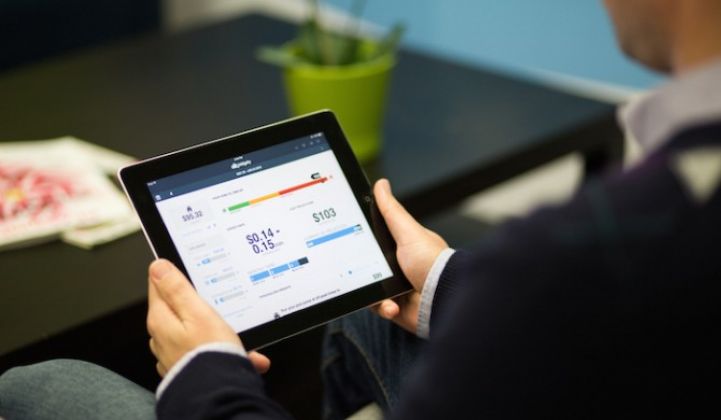With the right preparation, home energy devices could become a major asset for utilities in the coming years.
Today, utilities regularly call on smart thermostats to reduce demand on the grid and save money for ratepayers. But that system is pretty limited compared to the possibilities coming into view as customers buy connected smart-home devices and hook up solar panels, batteries and electric vehicles chargers.
"There’s the dream world, but the reality of it is just a lot of HVAC control right now," said analyst Elta Kolo of Wood Mackenzie Power & Renewables, describing the current state of residential demand response.
Bidgely and EnergyHub hope to turn those possibilities into reality with a new partnership.
The collaboration pairs Bidgely's ability to disaggregate home energy data with EnergyHub's controls for more than 15 home energy device brands.* Working together, they can offer utilities a way to engage with customers for energy savings and demand reductions across a broad suite of home equipment.
When Bidgely raised its $27 million Series C last year, its pitch was all about data disaggregation: mining meter data and other sources to pull out customized household- and appliance-level insights about energy efficiency and consumption. Its ambitions have grown since then.
"We thought it was time that we started expanding into the controls side, to not only tell people what to do but do it for them," said CEO Abhay Gupta.
Alerting customers that an appliance is wasting energy is one thing, but getting permission to turn down consumption when electricity prices are high could create a lot more value. Furthermore, a granular understanding of how homes use energy can inform more targeted introductions of controllable devices.
Gupta chose to partner with EnergyHub, which has already built out controls for the leading home smart device brands, rather than attempting to recreate that work.
"Building controls is not just building an [application programming interface]; it's about building relationships with the other brands," Gupta said.
To put this into practice, Bidgely and EnergyHub first need to win a utility contract with their platform for consumer engagement, energy efficiency and demand response. Then the partners can send personalized offers to residents to reward them for signing up devices in the program, or help them buy appliances that would save money.
This way, they scale up the population of controllable home devices within the utility territory. Gupta is bullish on the growth that the collaboration could unlock: He said that the total addressable energy for utility load-shaping could grow by a factor of 10.
Much of that growth would come from pulling in electric-vehicle chargers, which will become major new load sources as EV adoption picks up.
EnergyHub can also manage solar panels; while those devices can only generate electricity when the sun is out, the controls platform can curtail production, provide voltage support and deliver reactive power. Knowledge of solar generation can be used to optimize the timing of other devices' energy consumption. Home batteries could play a role as well, as their adoption increases.
"If you go to these whole-home disaggregation services, you can identify additional touch points to orchestrate flexibility," said Fei Wang, who analyzes home energy flexibility at WoodMac.
A network of home energy devices controlled by a third party for grid services sounds like the "virtual power plant" that companies like Sunrun or eMotorWerks are building up. But Gupta maintains that Bidgely won't go off and set up its own portfolio of assets.
"Our data comes from utilities," he said. "We’re pretty married to working with utilities and energy retailers and not direct to consumers."
Bidgely and EnergyHub have established leading positions in their respective fields, Kolo said, so they have the potential to deliver controllable home energy at considerable scale.
Bidgely has also begun exploring the use of voice-activated home devices for energy. Early applications will likely focus on simpler tasks, like customer engagement on energy bills.
This partnership, though, raises the possibility of voice-activated controls for energy devices, Wang noted. At some point, homeowners could tell their smart home to charge the electric car at the time that makes the most sense, and leave it to the algorithm to analyze solar production, variable rates and demand response events.
"These smart home devices are being adopted twice as fast as people adopted smartphones," Wang said. "Utilities are realizing that this is another way you can communicate with your customers."
In related news, home energy management company Tendril beefed up its energy disaggregation capabilities by acquiring startup EEme last week.
*An earlier version of this story cited the wrong number of brands that have integrated with EnergyHub's platform; the number has been corrected. This version also includes additional details about EnergyHub's control of solar installations.




